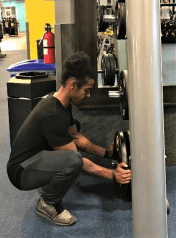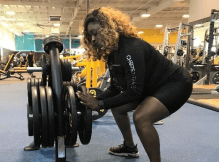PURPOSE: To provide employees with an understanding of ergonomics and to improve employee well-being through the prevention of injuries. Personal habits can make injuries more or less likely. Remember these steps to prevent injury:

☞ Think before you lift: where are you going with the weight? Will help be needed with the load? For long lifts, such as from floor to shoulder height, consider resting the load midway on a bench to change your grip on it.
☞ Keep the load close to the waist for as long as possible while lifting to reduce the amount of pressure on the back.
☞ Adopt a stable position: your feet should be apart with 1 leg slightly forward to maintain balance, alongside the weight when close to the ground.
☞ Hug the weight close to the body; this gives you a more solid lift than gripping the load tightly with the hands only.

☞ Do not bend your back when lifting: A slight bending of the back, hips and knees at the start of the lift is preferable to either fully flexing the back (stooping) or fully flexing the hips and knees – in other words, fully squatting.
☞ Do not twist when you lift: avoid twisting the back or leaning sideways, especially while the back is bent. Keep your shoulders level and facing the same direction as the hips. Turning by moving your feet is better than twisting and lifting at the same time.
☞ Look ahead: Keep your head up when handling the load. Look ahead, not down at the load, once it has been held securely.
☞ Know your limits: Do not lift or handle more than you can easily manage. There’s a difference between what people can lift and what they can safely lift. If in doubt, get help.

☞ Don’t slip!: Make sure you have a good grip on the weight and your hands are dry. Consider wearing workout gloves when re-racking.
☞ Watch your fingers!: Do not pinch fingers between weight plates or dumbbells.
☞ Ask members to re-rack their weights: Be friendly, make it a part of their workout.
